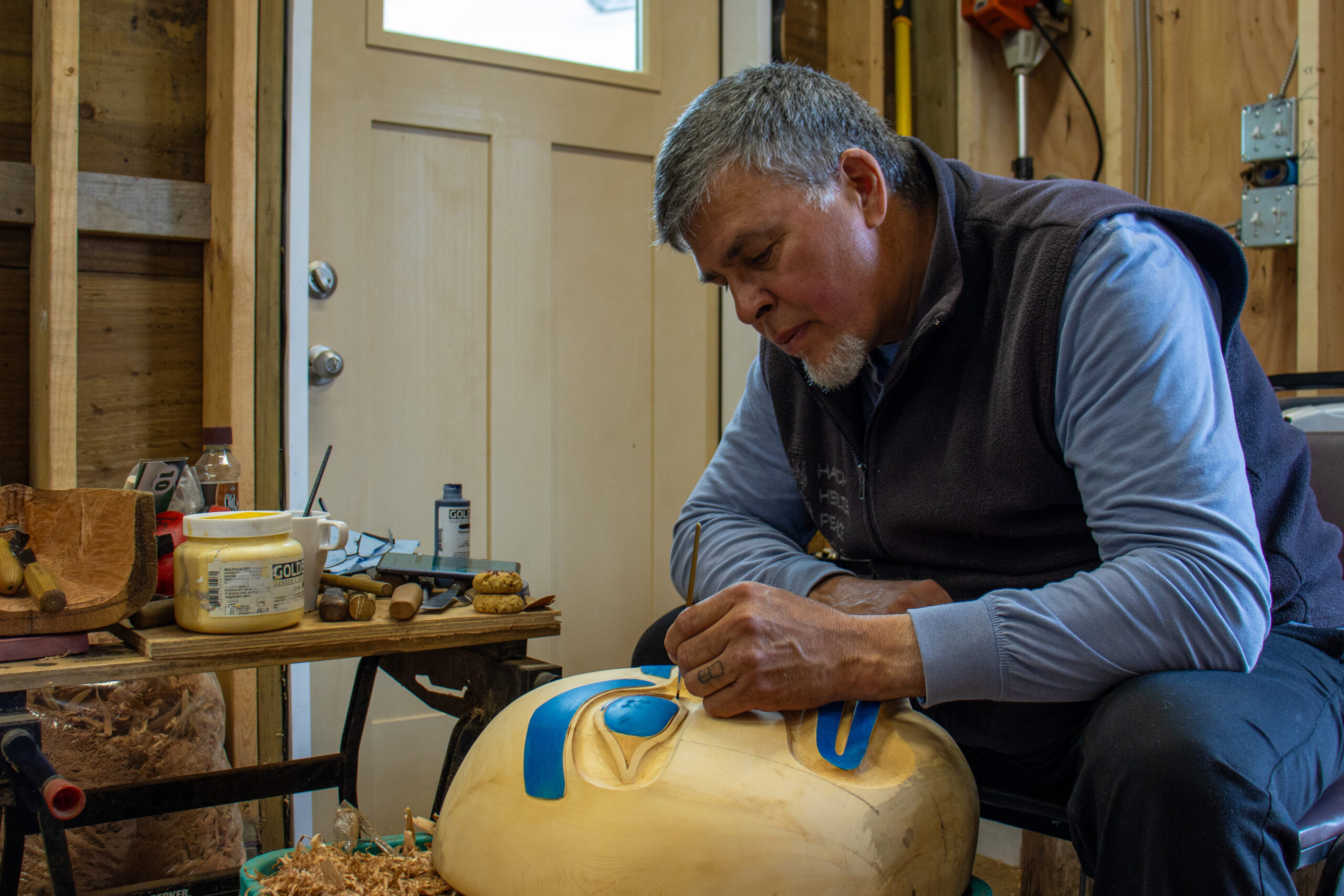One year ago, CFN joined technology partners and allies to form the “Coastal First Nations Connectivity Network,” designed for and dedicated to improving connectivity and opening doors to new possibilities for communities.
Improved connectivity has been foundational to BC’s priorities, emphasized in the province’s StrongerBC Economic Plan, the Declaration Act Action Plan, and in the Ministry Mandate. BC aims to ensure “every First Nations community in BC has high-speed internet services”, and has set a target to connect all homes in the province by 2027.
The Connected Coast Network is a flagship project that will run subsea fibre along BC’s entire coast and around Vancouver Island, to connect more than 139 communities, including over 40 Indigenous communities. The project was the topic of conversation during a gathering on Haida Gwaii in July 2022, where both the provincial and federal governments recommitted to getting the work done. While the project is still underway, CFN has been working with technology partners and community members to explore and realize new technology-based opportunities.
Protecting authenticity and accessibility
Kihlyaahda Christian White, a renowned Haida artist and carver from Old Massett, Haida Gwaii, sees many potentially positive outcomes with improved connectivity in his community. He joined CFN’s Connectivity Team to visit and explore new technologies from companies like Microsoft, LlamaZoo, Songhees Innovation Centre, and local Makerspace communities in Victoria.
White says advancements in connectivity will not only help to protect the authenticity of Haida art and artists, but it will create new opportunities for community members and empower Haida artists to “be the first past the gate.”
Sitting in his Longhouse in Old Massett with one of his apprentices, Danielle Louise Allard, and colleague, Kwaa Tsaaps Patrika McEvoy, White speaks about one of the biggest issues for Indigenous artists on the internet — the cultural appropriation of Haida art from people with little to no connection to Haida culture, protocols and community.
“We’ve seen other people benefitting from our people… people outside of our culture, we don’t even really know where they are, and they’re selling things on the internet,” White says. “We see modern-day artists’ work being copied… Each artist develops their own style, within their regional style… could be over 20 or 30 years… to have their artwork exploited by other people… it’s almost like you can’t keep up to it.”
Allard grew up off island, she says, but she moved home to learn more of the Haida arts and apprenticed with Christian. She’s been painting for the past couple of years, but before she moved back to Haida Gwaii, she didn’t want to call herself a Haida artist.
“I stayed away from doing Haida art… I tried little things, adding stuff into my artwork, but I didn’t want to call myself a Haida artist until I moved back here and actually worked with a master carver, a master artist. Christian is very knowledgeable on the cultural aspects of working in Haida art, not just the aesthetic of it,” Allard says. “Haida art encapsulates the whole culture, so it’s kind of frustrating when you can tell someone doesn’t have the training or the background knowledge, or when they just copy other people.”

Accessibility
Improved connectivity means artists can create, market and sell their own work online and more easily address any fraudulent claims to Haida art, White and Allard say. The development of new technologies and technology spaces in the community will also help address the inaccessibility and difficulties of ordering materials and getting work printed and produced.
From March 27-29, a small delegation visited the Victoria Makerspace, a member-operated shared space for collaborative tools, resources and knowledge, located at Camosun College. They also visited LlamaZOO’s head offices, met with leaders from Songhees Innovation Centre, and ended the tour at the Microsoft Garage in Vancouver to learn about and try out new technologies that support Nation-building and cultural resilience. White says a technology-enabled Makerspace in Old Massett would empower his community to market their work, both locally and internationally, as well as to source gifts for potlatches and events locally. Currently, White has a number of youth mentees working from his shop, which is constantly expanding.
“The virtual office spaces would be something that our people here could be utilizing. People need a delivery address,” White says. Living on an island, shipping costs and accessibility have been difficult for artists, White and Allard say. Sometimes, the costs are doubled, due to the location, and sometimes products don’t arrive at all.
“We order things and then they get canceled, because shipping costs too much,” Allard says. “Some places that you could do free shipping don’t, when they look at our postal code… it depends on the company.” Allard says she was impressed by Victoria Makerspace, LlamaZOO’s land-use Guardian technology, and Microsoft Garage, given its accessibility to users.
“I think that’s one of the hiccups for people getting into the arts, is it not always being accessible to them, as well as the materials,” she explains. “It would be nice if we had something like that, or funding for people to try different things, with the tools that are in this space. Even with virtual reality experiences, it makes it more accessible for people to view the world they can’t get out to.”
Building relationships
Patrika McEvoy, a councilor with the Old Massett Village Council, and the lead for CFN’s Early Earthquake Warning Response system, says she believes there’s unlimited potential for her community and technological partnerships. Partnerships rely on reciprocal relationships, she says, especially in an era of reconciliation, where many across Nations are working to make things right.
“We’re building relationships, which requires a lot of time and investment. We prefer to do things face-to-face and then you can put a face to a name. Maybe people have an idea of what they can do, but it doesn’t necessarily fit our needs,” McEvoy says. “The only way they could understand how our relationships could be beneficial, how tools and resources could work to protect our culture, and ensure we’re passing on knowledge to our next generations, is through relationships.” McEvoy imagines technological advancements in language preservation and other community-run and community-based projects and initiatives.
Joseph Nash is the Director of IT and Project Management for the Nuxalk Nation. Nash says he was inspired to network with CFN’s technology partners, because Canada doesn’t have an “IT” or digital minister, which means it’s hard to access support for technology projects in community. After connecting with Microsoft in person, Nash says he and his team have been able to access funds and develop an app that will feature Nuxalk language and values for Nuxalk community members. The app is intended to be used as an educational tool that reminds Nuxalkmc of their values and societies, Nash explains over the phone.
The app will feature Laaqwmays, a Nuxalk language educator and speaker who has experience running a radio show, creating films and engaging with his community. All of the information shared will be “vetted through the ancestral governance team,” Nash says. The possibilities with Indigenous-led technology are endless. With high-speed connectivity becoming a reality throughout the coast with the completion of the Connected Coast project by March 2024, this is a transformational moment.
Quality access to digital technology will support entrepreneurs, generate new streams of wealth and build on a healthy coastal economy. Every day there are new possibilities opening up to bring community creators and innovators together to take advantage of new technologies that can enhance collaboration in building the conservation-based economy. While there have been many important steps taken so far, there is a long way to go to realize community needs. CFN continues to advance community-focused technology partnerships, based on the principle of reciprocity, to support a future where anyone, anywhere, is empowered to connect and create.

